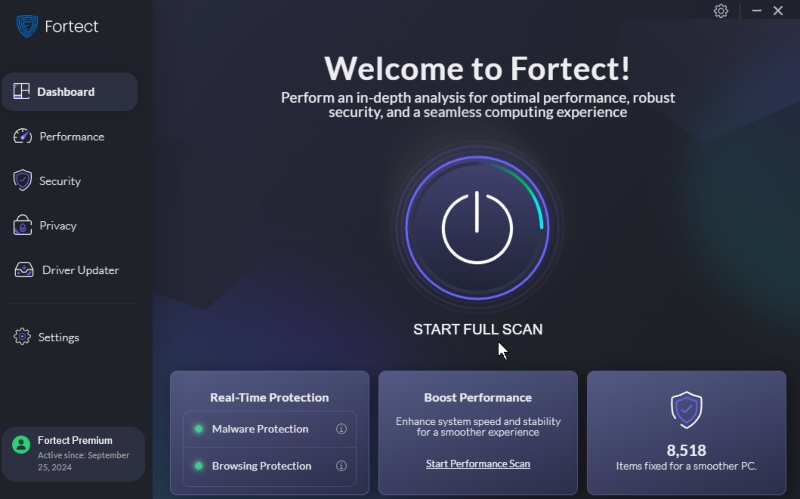How to Protect Your Windows PC from Rootkit Attack
Cybersecurity is more critical than ever as the internet evolves and users are increasingly demanding. Among the various threats to your system, rootkits stand out as one of the most dangerous.
It hides deep within your system, evading antivirus programs’ detection and allowing hackers to access, steal, or manipulate your data.
We will examine this malware, how to identify it, and, most importantly, how to protect your Windows PC from these stealthy attackers.
What is a Rootkit and its Types
A rootkit is malicious software designed to gain unauthorized access to a computer or network while remaining hidden from users and security software. It can be particularly dangerous because it allows hackers to control a computer remotely, seal data, and install additional malware without the user’s knowledge.
Types of Rootkits:
- Kernel Mode: These target the core of your operating system, giving the attacker control over your entire computer. They are challenging to detect because they operate lowly within the system.
- User-mode: User-mode rootkits operate at the application level, targeting specific software. While easier to detect than kernel-mode rootkits, they can still cause significant damage by manipulating user-level applications.
- Bootkit: This type of rootkit infects the Master Boot Record (MBR) and starts before the operating system loads, making it extremely hard to detect and remove.
- Firmware: These infect your hardware’s firmware, such as the BIOS or UEFI, and are particularly hard to remove since they exist outside the operating system.
- Memory Rootkits: These temporary rootkits exist in the RAM and disappear once the computer is restarted. Despite their temporary nature, they can still cause considerable damage.
How to Prevent Rootkits on Your Windows PC
Preventing rootkit malware infections is essential to maintaining your system’s security and integrity. Following these proactive measures can significantly reduce the risk of this attack.
Keep Your Windows OS Up to Date
One of the most effective ways to protect your PC from this malware is to keep your operating system up to date. Microsoft regularly releases security patches and updates that fix vulnerabilities in Windows. Ensuring your system is updated minimizes the risk of a rootkit exploiting a known vulnerability.

To check if your Windows is up to date:
Start > System > Windows Update ( lower left ) > If Windows is up to date, it will show here; if not > Check for Updates button or Install Update.
Download Files from Trusted Sources Only
Only download files and software from trusted and verified sources. Avoid downloading cracked software, pirated content, or files from unknown websites, as these are common vectors for rootkit infections. Always confirm the legitimacy of a site before downloading anything.
Be Alert to Phishing Scams

Attackers commonly use phishing scams to distribute rootkits. These scams often appear in emails or messages that appear legitimate but contain malicious links or attachments. Always be cautious when clicking links or downloading attachments, especially from unknown or suspicious sources.
Scan Your System Regularly
Regularly scanning your system with a reliable antivirus or anti-malware program is crucial in detecting and removing potential rootkits. Some rootkits are designed to evade detection, so an advanced antivirus that identifies hidden threats is essential.
Consider investing in a PC solution like Fortect Premium, which automatically monitors and scans your Windows PC for malware and viruses. Fortect Premium detects threats such as rootkits and other malicious software, providing real-time notifications and promptly removing them. Afterward, it optimizes your PC for full performance.

Download and install Fortect now.
Use Advanced Antivirus Software
Investing in advanced antivirus software that offers real-time protection, rootkit detection, and removal features is crucial. These tools are specifically designed to detect rootkits and other sophisticated malware that might escape traditional antivirus programs. Ensure your antivirus software is always up to date for maximum protection.
Signs Your PC is Infected with a Rootkit
Detecting a rootkit infection can be challenging due to its stealthy nature, but sure signs may indicate your system is compromised:
- Slow System Performance: If your computer is running slower than usual, it could be a sign of a rootkit hogging your system resources.
- Unexpected System Crashes: Frequent crashes, blue screens, or sudden reboots suggest the presence of a rootkit.
- Unusual Network Activity: When not using the internet, high network activity levels could indicate that a rootkit is sending data to an external server.
- Disabled Security Software: If your antivirus or firewall is mysteriously disabled, a rootkit could be to blame.
- Unauthorized Access to Files: If files are accessed, modified, or deleted without your knowledge, a rootkit might be at work.
Conclusion
Rootkits represent a severe threat to your Windows PC, but with the proper precautions, you can significantly reduce the risk of infection. You can protect your PC from rootkit attacks by keeping your operating system updated, being cautious with downloads, staying vigilant against phishing attempts, and regularly scanning your system with advanced antivirus software.
Maintaining a proactive approach to cybersecurity is critical to keeping your data and system safe from these hidden threats.




